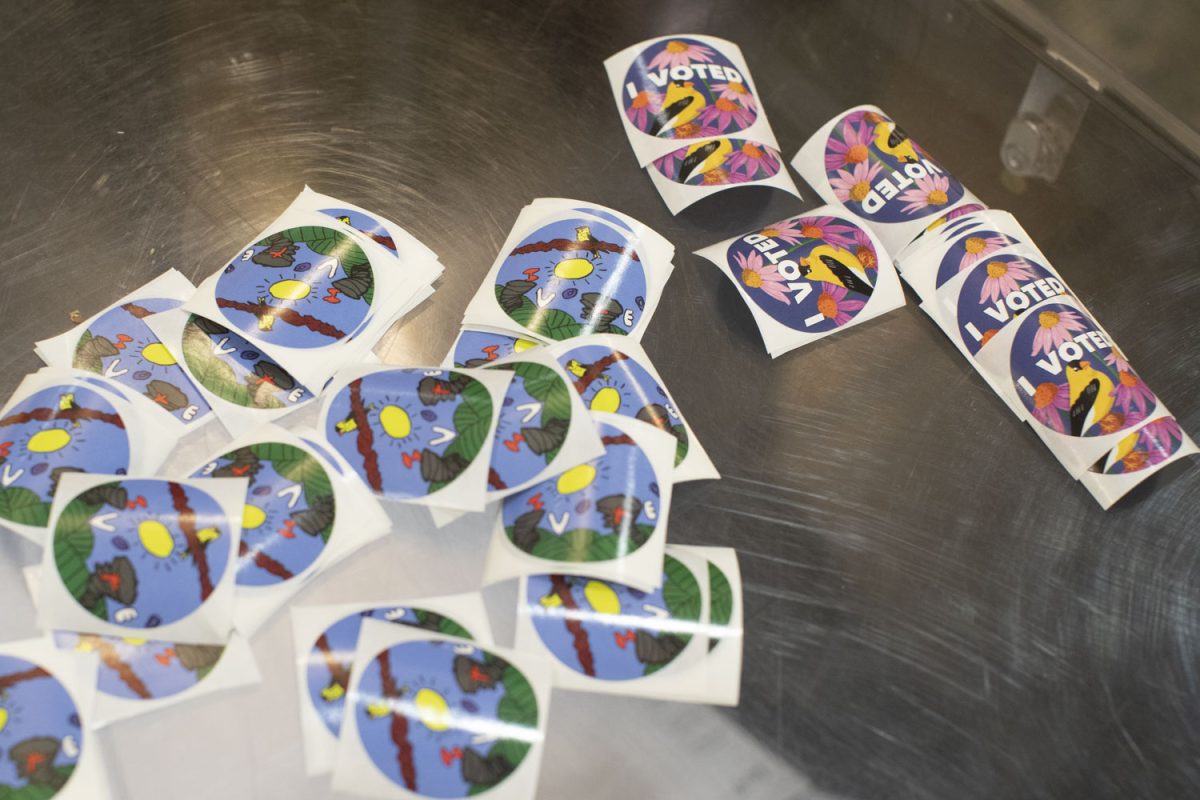A werewolf ripping its shirt off in front of an American flag.
It’s not necessarily the first image that comes to mind when discussing politics and voting habits. But thanks to a 12-year-old student from Grosse Pointe Farms, Michigan, that perception has certainly changed.
Jane Hyounus, a seventh-grader at Brownell Middle School, set the internet ablaze earlier this fall when the Michigan Department of State revealed the winners of its 2024 “I Voted” sticker design contest.
Her unconventional drawing of the aforementioned muscular mythical creature shredding a navy blue T-shirt with the stars and stripes neatly displayed in the background was one of nine winning designs. The awards were divided evenly between elementary and middle school students, high school students, and general entry applicants.
When asked why she chose such an imaginative design, Jane simply replied, “I didn’t want to do something that you usually think of when you think of Michigan.”
Now, thanks to the creativity of Jane and eight other artists, come election day in Michigan, all winning designs will be available for clerks to distribute to voters.
Recently, similar contests have been introduced on both state and nationwide levels. Johnson County, Iowa, even launched its own competition, with two designs crowned as this year’s winners. Both designs feature the Iowa state bird — the American goldfinch — and the classic phrase “I Voted” across the front. One of the winning drawings was created by 11-year-old county resident Cameron Johnson.
The original goal of these contests by government agencies was to creatively boost civic engagement and educate community members on local politics. However, these competitions have illustrated how inventive advertising can not only encourage people to hit the polls but also, based on online interest, actively engage them in local and national politics.
Some may argue that design contests or even the existence of “I Voted” stickers are trivial and have little impact on the democratic process. In reality, these stickers play a larger role in voter turnout than many would anticipate.
A 2016 study “Voting to Tell Others” found that the “I Voted” sticker strikes a psychological cord in many of us. We often have a desire to show others that we’re engaged participants in our country’s democratic process. Displaying “I Voted” stickers serves as a reminder for others to cast their own ballots, thereby extending civic engagement beyond the sticker’s initial purpose.
This idea is underscored by sticker contests. Many people said their favorite part of voting is receiving uniquely designed “I Voted” stickers, especially when they feel involved in picking the designs that end up on voters’ chests on Election Day.
In an interview with Fast Company, Ashley Torres, commissioner of the Ulster Board of Elections, said, “We consistently receive overwhelmingly positive feedback from voters of all ages, who say their favorite part of voting in Ulster County is wearing the unique ‘I Voted’ stickers designed by young local artists. Poll workers also tell us it’s their favorite part of the job, helping to create a positive and uplifting atmosphere at the polling sites.”
Ulster County, New York, has held a countywide “I Voted” sticker design contest for several election cycles, boasting a variety of creative designs over the years. One of its most memorable designs featured a six-legged spider with a neon-colored humanoid face smiling at the words, “I Voted,” which received more than 158,000 votes in the fall of 2022.
Not only does this demonstrate how small details, like uniquely designed “I Voted” stickers, bring awareness to both local and federal elections, but it also showcases the subliminal need for citizens to help choose their leaders, even if it’s only to get a cool piece of sticky plastic as a reward.
Regardless of what the sticker looks like, these contests and their creative results help voters connect with their respective regions and recognize individuals who contribute to the democratic process. Despite what critics may say, these competitions are a small price to pay for ongoing civic engagement, especially from the newest generation of voters.



